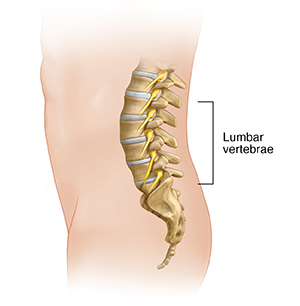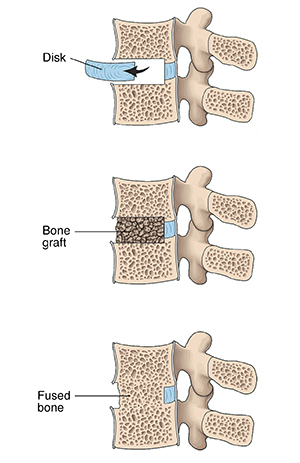Spinal fusion surgery is performed to connect two or more bones in the spine so that they heal into a single, solid bone. These bones are called vertebrae. Fusing vertebrae in the lower (lumbar) spine may help ease lower back and leg pain.
A lumbar fusion is an effective and popular surgical procedure to restore the intervertebral disc space and stabilize the spine. Anterior lumbar interbody fusion (ALIF) is done through an incision in your abdomen. The surgery may take from 3 to 8 hours. This depends on how many vertebrae are fused. In some people, an ALIF is combined with a posterior instrumented fusion (PIF). This is done through an incision in the back.
The fusion procedure
Here is what to expect:
-
An incision is made on one side of your abdomen.
-
The disk is removed from between the vertebrae that require fusion. This leaves an empty space between the vertebrae.
-
A bone, synthetic, or metal graft is placed into the empty space.
-
The graft may be held in place with screws or a plate with screws. Over time, the graft and the bone around it grow into one solid unit.
-
A tube called a drain may be left in the wound for a few days.
-
The incision is closed with sutures or staples.



